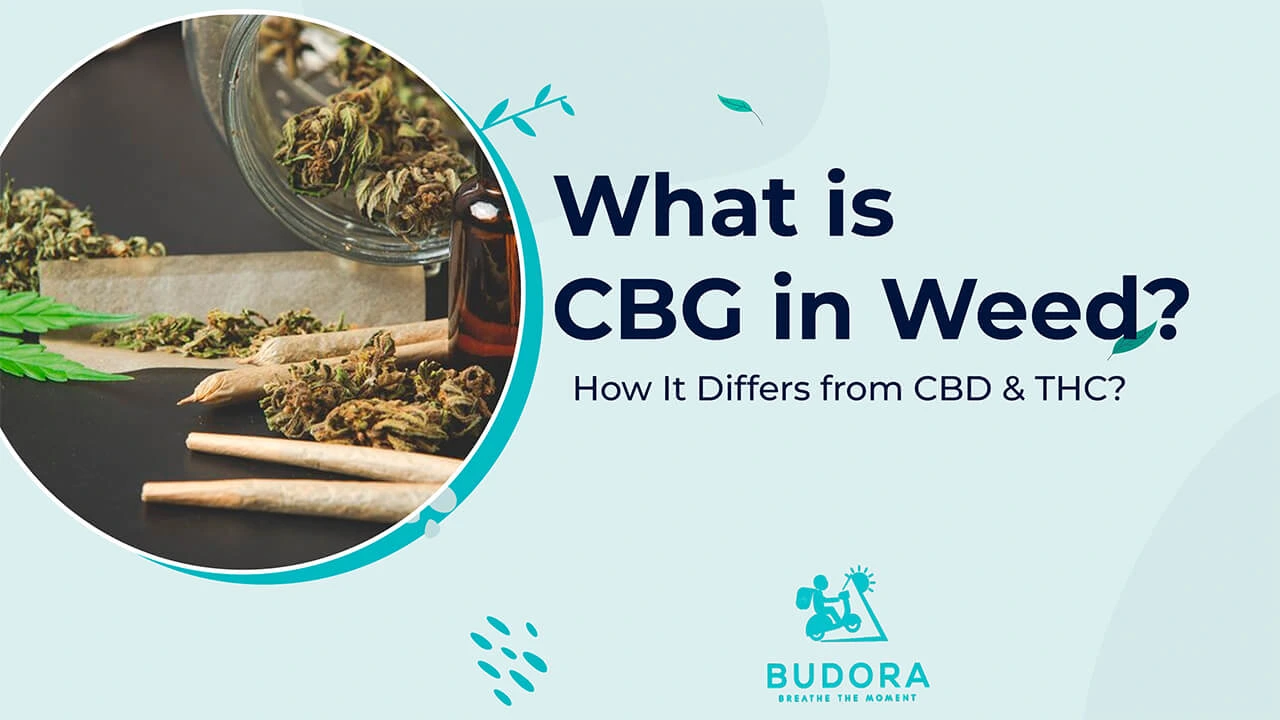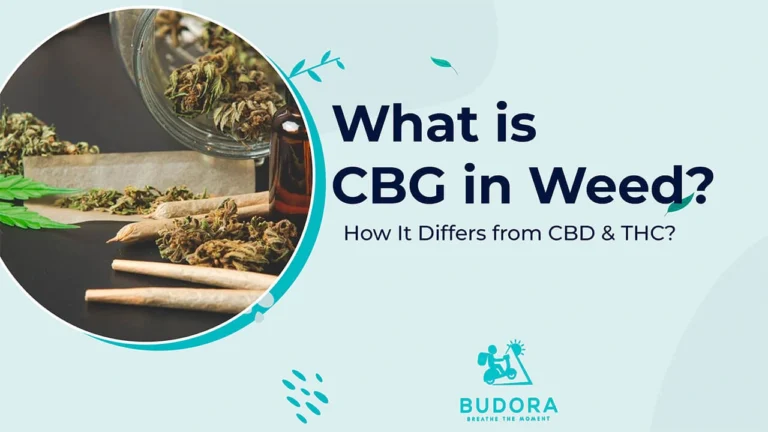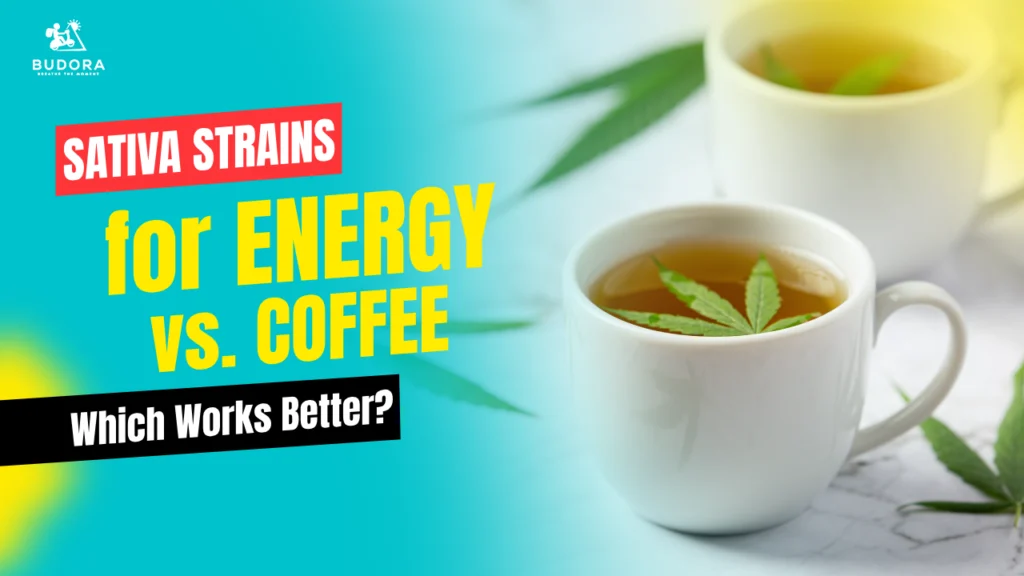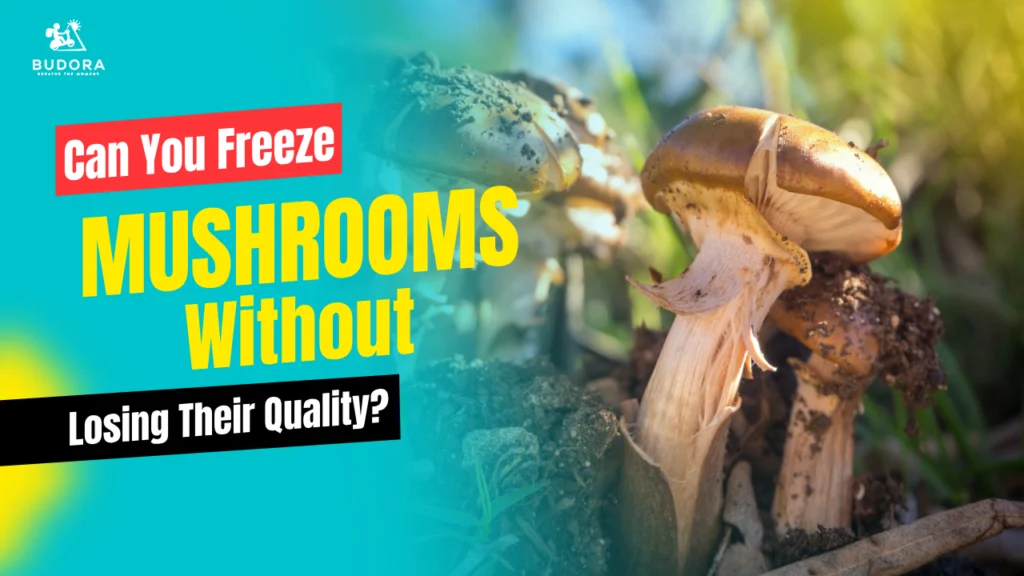Blog


What is CBG in Weed? How It Differs from CBD & THC
- Budora Team
Cannabigerol (CBG) is one of the lesser-known cannabinoids in cannabis, yet it plays an important role in the plant’s makeup. Known as the “mother of all cannabinoids,” CBG is the precursor to compounds like THC, CBD, and concentrates with THC. Although it appears in smaller amounts than these well-known cannabinoids, research suggests CBG may offer unique health benefits. This guide explains what CBG is, how it differs from other cannabinoids, and its potential uses.
Keynotes:
- CBG is the “Mother of Cannabinoids” – It serves as a precursor to THC, CBD, and other major cannabinoids.
- Non-Psychoactive & Therapeutic – Unlike THC, CBG does not produce a high but may offer potential health benefits.
- Potential Health Benefits – Research suggests CBG has anti-inflammatory, neuroprotective, and antibacterial properties.
- Limited Availability – CBG is found in smaller amounts in cannabis, making extraction costly but valuable.
What is CBG?
CBG, or Cannabigerol, is a non-psychoactive cannabinoid found in cannabis plants. It is considered the “stem cell” of cannabinoids because it is the acidic precursor to major cannabinoids like THC (tetrahydrocannabinol) and CBD (cannabidiol). During the plant’s growth cycle, CBG-A (CBG’s acidic form) converts into THC-A, CBD-A, and CBC-A, leaving behind only trace amounts of CBG in most cannabis strains.
CBG vs. CBD & THC: What’s the Difference?
While CBG shares similarities with CBD and THC, there are distinct differences:
CBG vs. THC
Unlike THC, CBG is non-intoxicating, meaning it won’t produce a “high.” It may actually help balance the effects of concentrates with THC. CBG is being studied for focus and clarity rather than euphoria. This makes it appealing for users who want benefits without impairment.
CBG vs. CBD
Both CBG and CBD are non-psychoactive, but CBG interacts differently with the body’s endocannabinoid system, potentially offering unique therapeutic effects. CBG may target appetite, mood, and eye health more directly. CBD, on the other hand, is often linked with relaxation and stress relief. Using them together might create a stronger entourage effect.
Availability
While most cannabis strains contain high levels of THC or CBD, CBG is typically present in much lower concentrations. Selective breeding is now making CBG-rich strains more available. CBG can also be extracted into oils, tinctures, or capsules. Because it’s rare, CBG products are usually more expensive.
Potential Benefits of CBG
Although research on CBG is still in its early stages, studies suggest that it may offer several potential health benefits:
Anti-Inflammatory Properties
May help reduce inflammation in conditions like inflammatory bowel disease (IBD). Studies show it interacts with receptors that regulate immune response. This makes CBG a potential option for managing chronic pain and swelling.
Neuroprotective Effects
Could aid in neurodegenerative diseases such as Huntington’s disease. Research indicates CBG may protect brain cells from oxidative stress. It’s being studied for its role in supporting long-term brain health.
Antibacterial Benefits
Research suggests CBG has antibacterial properties, particularly against antibiotic-resistant bacteria like MRSA. It may strengthen the body’s defense against hard-to-treat infections. Scientists see promise for CBG as a natural antibacterial agent in future therapies.
Glaucoma Relief
May help reduce intraocular pressure, making it a potential treatment for glaucoma. Lowering eye pressure can prevent vision loss over time. CBG may offer a gentler alternative compared to some traditional glaucoma medicines.
Appetite Stimulation
Early studies indicate CBG may increase appetite without causing psychoactive effects. This can benefit patients dealing with appetite loss from illness or treatments. It may serve as a natural support for healthy weight maintenance.
How is CBG Extracted?
Since CBG exists in small amounts in most cannabis strains (usually less than 1%), extracting it can be challenging and expensive. However, some breeders are developing CBG-rich strains, and specific extraction methods help isolate this cannabinoid for use in products like oils and tinctures.
CBG-Rich Strains & Products
While most cannabis strains contain minimal CBG, some specially bred strains have higher concentrations. Examples include:
- White CBG – One of the most popular strains bred specifically for high cannabigerol content. It delivers a smooth, earthy flavor while offering calming effects without intoxication.
- Jack Frost CBG – Known for its frosty appearance and uplifting, clear-headed experience. This strain is often chosen for focus, balance, and daytime relief.
- Super Glue CBG – Combines a rich terpene profile with high CBG levels. It may support relaxation and stress relief without the drowsiness that THC strains can cause.
- CBG-Rich Hemp Strains – Breeders have developed hemp strains that naturally produce more CBG than standard varieties. These strains allow for large-scale extraction, making CBG more widely available to consumers. CBG is available in various forms, such as:
- CBG Oils & Tinctures – Among the most versatile ways to consume CBG. They allow for precise dosing and can be taken sublingually for faster absorption.
- CBG Edibles – Gummies and capsules provide a convenient, discreet way to enjoy CBG. They offer longer-lasting effects as the compound is slowly digested and released into the system.
- CBG-Infused Topicals – Creams, balms, and lotions deliver CBG directly to targeted areas of the body. Often used for localized relief of muscle soreness, joint stiffness, or skin irritation.
- CBG Vape Products – Vaping delivers rapid absorption through the lungs, providing fast-acting effects. It’s a preferred option for those seeking immediate relief without waiting for digestion.
Is CBG Legal?
In Canada and many parts of the U.S., CBG derived from hemp (with less than 0.3% THC) is legal. However, laws can vary, so always check local regulations before purchasing CBG products.
Final Thoughts
CBG is an emerging cannabinoid with promising potential benefits, from anti-inflammatory effects to neuroprotection. Although it’s less common than CBD and THC, its unique properties make it an exciting area of research. As cannabis science advances, we may see more CBG-rich products becoming widely available.
Want to Explore Premium Cannabis Products?
Discover high-quality strains and edibles at Budora!
FAQs
What is CBG vs CBD vs THC?
CBG (cannabigerol) is a precursor to both CBD and THC—plants convert CBG into these compounds during growth. CBD is non-psychoactive and often used for calming or wellness effects, while THC is the main psychoactive cannabinoid that produces a “high.”
What does CBG do in weed?
CBG acts as a building block in the cannabis plant and may offer mild therapeutic effects on its own. In weed, it contributes to the “entourage effect,” influencing how THC, CBD, and other cannabinoids interact in your body.
Can you have CBG without THC?
Yes. You can have CBG-rich strains or products with very low or negligible THC content. Breeders and manufacturers often isolate or enhance CBG in such a way that THC is minimal or nonexistent.
What do CBD, CBG, and THC do together?
Together, these cannabinoids can produce a synergistic “entourage effect,” where their combined impact may be stronger or more balanced than one alone. CBD may soften THC’s psychoactive effects, while CBG may modulate immune response or mood in complementary ways.
What is a CBG test?
A CBG test is a laboratory analysis that measures how much CBG is present in a cannabis sample or product. It ensures potency, quality, and helps consumers choose the right product profile (e.g., high CBG vs standard THC strain).
What do CBG and THC feel like?
Because CBG is non-intoxicating, it doesn’t produce a psychoactive “high” on its own. THC, on the other hand, can create euphoria, altered senses, and mild sedation—so a product combining both may feel balanced, offering subtle benefits without full intoxication.
Like this article?

Budora Team
OTHER ARTICLES YOU MAY LIKE



